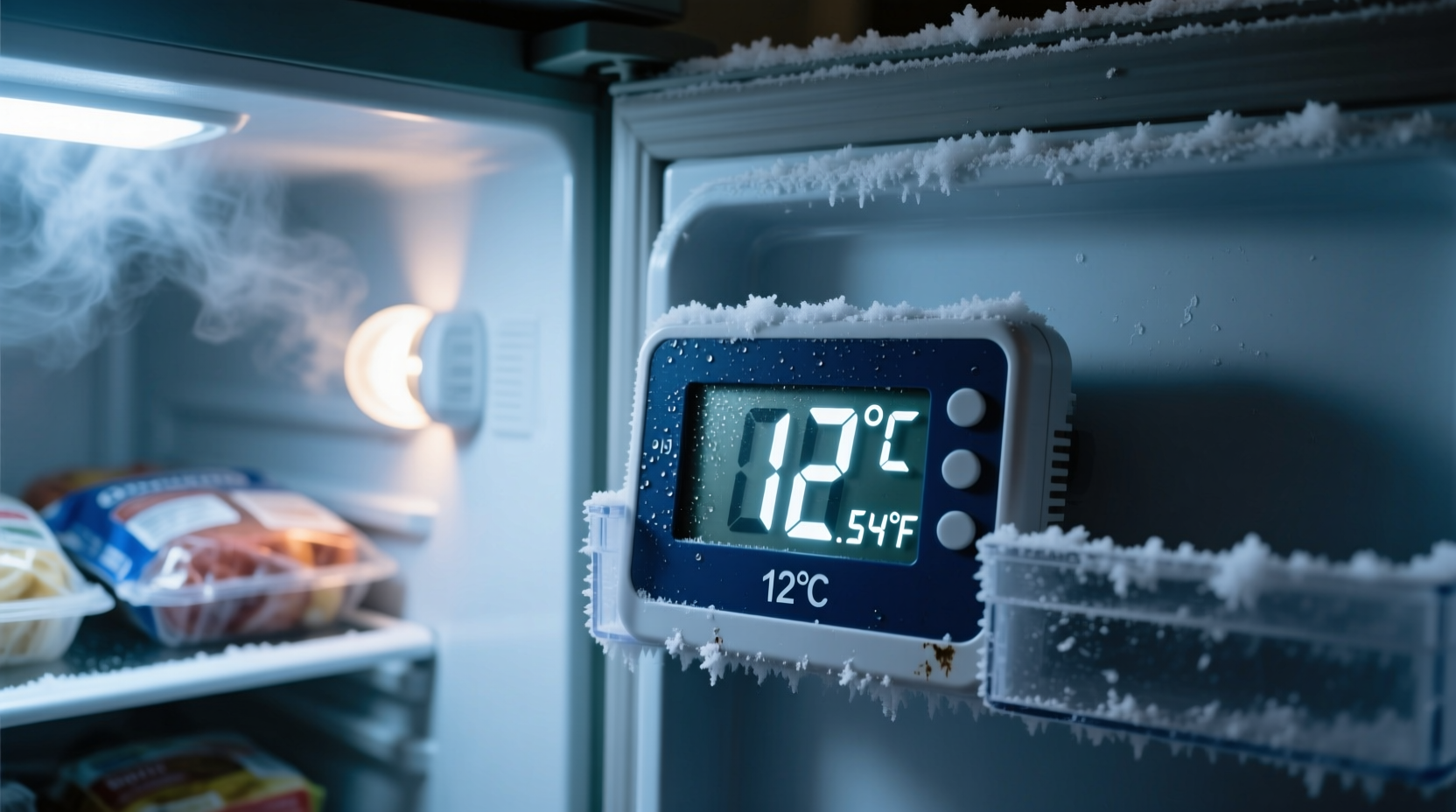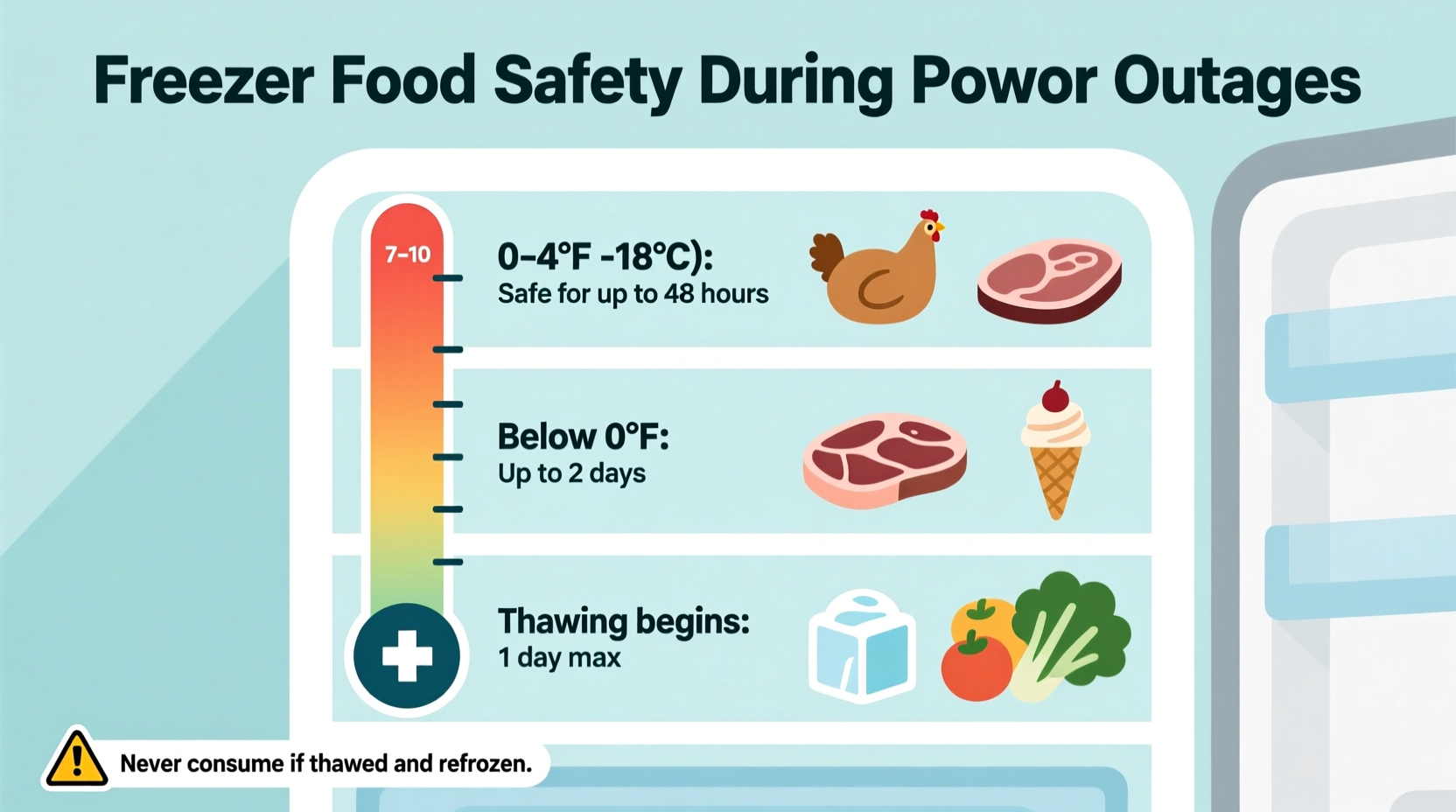When the power goes out, your freezer becomes a temporary time capsule for your food. Understanding exactly how long does food last in the freezer without power can mean the difference between salvaging hundreds of dollars worth of groceries or risking foodborne illness. This comprehensive guide delivers actionable information based on current food safety standards from the USDA and FDA.
The Critical First 24 Hours: Immediate Actions That Matter Most
The moment your power fails, your freezer begins a countdown. The most crucial factor determining how long frozen food stays safe without electricity is how often you open the freezer door. Each opening allows cold air to escape, accelerating temperature rise.
Follow these immediate steps:
- Keep freezer doors closed at all times - this maintains cold air longest
- Place towels around door seals to prevent warm air infiltration
- Have appliance thermometers visible for quick temperature checks
- Consider moving critical items to coolers with ice if outage extends beyond 12 hours

Science-Backed Food Safety Timelines
Food safety experts from the USDA Food Safety and Inspection Service confirm that frozen food remains safe based on two critical factors: freezer fullness and door closure. The maximum safe duration for food in freezer without power follows these evidence-based guidelines:
| Freezer Condition | Safe Duration | Critical Temperature Threshold |
|---|---|---|
| Full freezer (door closed) | Approximately 48 hours | Stays below 40°F (4.4°C) |
| Half-full freezer (door closed) | Approximately 24 hours | Stays below 40°F (4.4°C) |
| With dry ice (25 pounds per day) | Extended by 2-3 days | Maintains 0°F (-17.8°C) |
These timeframes come directly from the USDA Food Safety and Inspection Service guidelines, which establish that frozen food remains safe as long as it contains ice crystals and hasn't exceeded 40°F for more than 2 hours.
How Different Foods Hold Up: Specific Safety Guidelines
Not all frozen foods have identical safety windows. Understanding how long does specific food last in freezer without power requires knowing each item's unique properties. The FDA Food Code establishes that protein-rich foods require more careful monitoring than other categories.
Use this reference when assessing food after a power outage:
- Meat and poultry: Discard if temperature has been above 40°F for more than 2 hours. If ice crystals remain, cooking to proper internal temperature makes it safe.
- Seafood: More temperature-sensitive than other proteins. Discard if completely thawed with no ice crystals.
- Dairy products: Frozen milk, cheese, and butter can be refrozen if they still contain ice crystals and haven't reached room temperature.
- Baked goods: Generally safe longer than proteins. Bread and cakes can often be salvaged even after complete thawing if properly reheated.
- Fruits and vegetables: May lose texture but remain safe if promptly refrozen or cooked.
Assessing Food Safety: The 3-Point Verification System
When power returns, don't rely solely on time estimates for how long does food last in the freezer without power. Implement this professional food safety assessment method:
- Temperature check: Use a food thermometer to verify internal temperature hasn't exceeded 40°F for more than 2 cumulative hours
- Ice crystal test: Examine for remaining ice crystals, particularly between food items
- Sensory evaluation: Check for unusual odors, slimy textures, or visible spoilage signs
The Centers for Disease Control and Prevention specifically warns against tasting food to determine safety, as harmful bacteria may be present without noticeable changes in appearance or smell.
Maximizing Your Freezer's Emergency Performance
Smart preparation significantly extends how long food stays frozen during power outage. Implement these professional strategies before disaster strikes:
- Organize freezer with older items in front, newer items in back
- Group similar items together to create cold pockets
- Keep freezer at least 75% full during normal operation (fill empty space with water bottles)
- Install a magnetic appliance thermometer for quick visual checks
- Create an emergency kit with dry ice contacts and cooler storage options
Research from the National Center for Home Food Preservation shows that properly organized freezers maintain safe temperatures 30% longer during power failures compared to haphazardly filled units.
When to Definitely Discard Food
Certain situations require immediate disposal regardless of time elapsed. The USDA identifies these as non-negotiable discard scenarios for frozen food safety without power:
- Any food showing mold growth
- Meat or poultry with slimy texture or sour odor
- Food that has reached room temperature for more than 2 hours
- Items stored above 40°F for more than 4 hours
- Perishables in freezers that completely thawed during extended outages
When in doubt, throw it out. The cost of replacing food is far less than medical expenses from foodborne illness.











 浙公网安备
33010002000092号
浙公网安备
33010002000092号 浙B2-20120091-4
浙B2-20120091-4